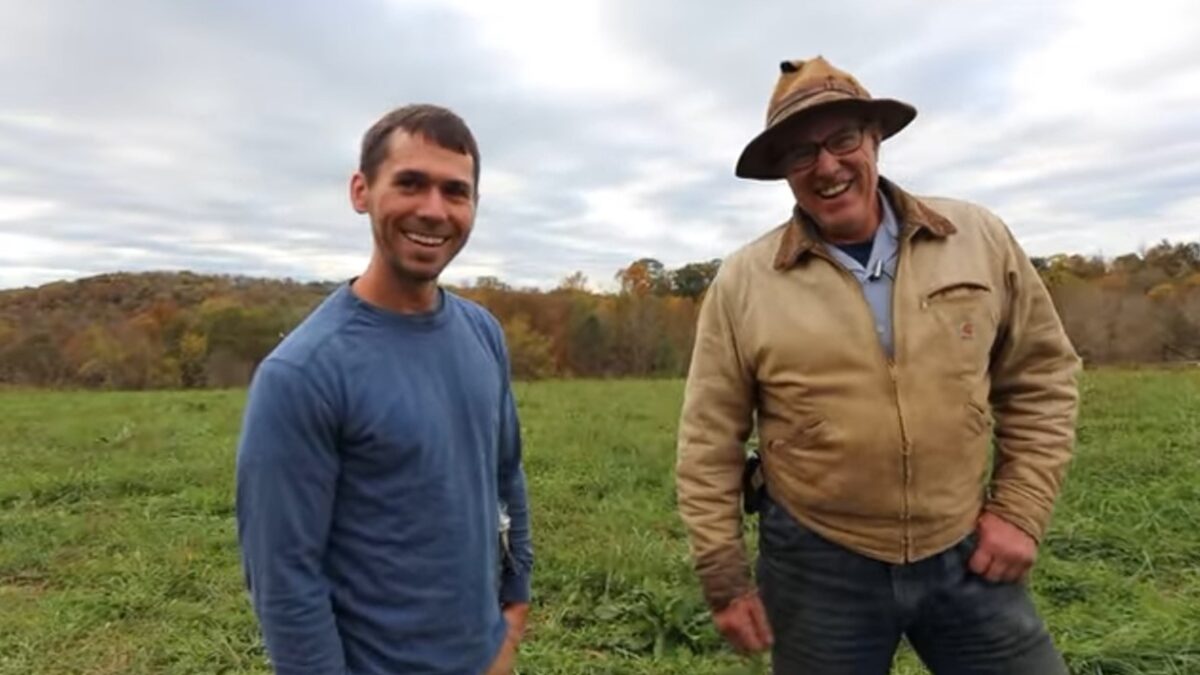
What does a sustainable farm look like? That’s the question this NPR article asked yesterday. Reporter Dan Charles considers the impact of a new sustainability program called SUSTAIN, which seeks to reduce the amounts of nitrogen fertilizer that corn farmers use on their fields.
Nitrogen is considered “the essential ingredient for growing corn and most other crops,” he writes. “Farmers around here spread it on their fields by the truckload.” But that nitrogen can significantly harm soil, water, and local ecology:
The problems with nitrogen fertilizer start at its creation, which involves burning lots of fossil fuels. Then, when farmers spread it on their fields, it tends not to stay where it belongs. Rainfall washes some of it into streams and lakes, and bacteria in the soil feed on what’s left, releasing a powerful greenhouse gas called nitrous oxide.
Fixing this problem, unfortunately, isn’t easy. Land O’Lakes’ new SUSTAIN program seeks to reduce the amount of nitrogen that corn farmers use, but its results are currently mixed. The program’s recommended practices may result in less runoff, but there are currently no signs that farmers in the SUSTAIN program are using less nitrogen on their fields. Matt Carsten, who started the SUSTAIN program, says the initiative will help people use nitrogen “more wisely,” but adds that “to say that every year we can count on a reduction, that’s just not possible.”
What Should Sustainability Look Like?
This, of course, gets back to the fundamental question at the beginning of this piece: what is sustainability? Is it a more efficient, “clean” version of current farming methods? Or does it require greater revolution and change?
Some don’t think SUSTAIN goes far enough. Sarah Carlson, who works for Practical Farmers of Iowa, told NPR that “Companies could give farmers a financial incentive to move away from simply growing corn and soybeans, instead adding ‘small grains’ like oats (or rye) to their mix of crops.”
That simple move could cut greenhouse gas emissions by a third, much more than anything SUSTAIN is doing, she says. Oats, unlike corn or soybeans, can easily be grown together with a ‘cover crop’ of clover. That clover has an important benefit: It adds nitrogen to the soil the organic way, replacing the need for synthetic nitrogen that’s manufactured in energy-intensive factories. (Nitrogen from clover still gets converted into nitrous oxide by soil bacteria, however.) In addition, cover crops add carbon to the soil, which also helps fight climate change.
This is something I’ve heard from advocates for polyculture farming: its diverse methodology, in which some combination of plant and animal life are kept and rotated on farmland, creates a symbiotic and self-nourishing environment. They argue that many of our problems arise from the homogeneity of today’s commodity crops, and the way it wreaks havoc on soil, water, and animal life (not to mention farmers’ pocket books).
They suggest that diversity isn’t just better for the planet—it’s good for business, since farmers don’t have to put all their money in one crop. The business risk is significantly lower. But, of course, the hands-on work and management required is exponentially higher.
Other Methods To Increase Sustainability
Another Minnesota corn farmer, profiled by National Geographic, is pairing ancient practices with modern technologies to boost soil health and sustainability:
One major innovation for Biegler is strip-tilling, planting only in an eight-inch-wide strip. Leaving the soil untouched between rows helps reduce soil erosion, improves water infiltration, uses less fuel, and improves soil quality by allowing the soil to retain nutrients.
After the main corn crop is planted and starts coming up, Biegler goes back in with a seeder he helped design and puts in cover crops such as oats, turnips, rapeseed, or cereal rye. ‘It puts another living root into the corn,’ he says. These roots help prevent the kind of erosion he experienced during that big gully-washer four years ago. In other words, marrying generations-old techniques with modern innovation has turned out to be a big plus for the sustainability of his farm.
… Deploying sustainable agriculture techniques and focusing on soil health has allowed farmers like Biegler to minimize pesticide and fertilizer use while improving the environment. A long-time practitioner of crop rotation, he plants half his fields in corn, the other half in soybeans, and switches fields every season. By rotating his crops, he reduces the pressures of insects and crop disease – and reduces his needs for chemicals like herbicides. ‘If you plant corn season after season you can get certain diseases and bugs, and you can’t control that easily.’ Put another way, ‘switching to soybeans eliminates the bugs that were in the previous corn crop – rotation breaks the pest cycle naturally.’
One of the greatest challenges to diversification is that price supports are all tied up in “King Corn“—not in oats or cover crops. These lesser crops are seen as means to a larger end: more corn. Fixing this imbalance—one the the government has helped create via price supports and crop insurance—will require a combination of deregulation and savvy consumers. As Charles notes in his piece, the one “crucial obstacle” to planting less corn and more oats is that it “would cost a little more money, and somebody would have to pick up that tab. It could be Walmart — and, in turn, American consumers.”
American agriculture is in the poor state it’s in, at least to some extent, because Americans have embraced cheap agricultural practices and food choices over long-term health and flourishing. That means it will take more than a nitrogen-reduction program to fix the deeper ethos and attitudes influencing day-to-day farm life.









